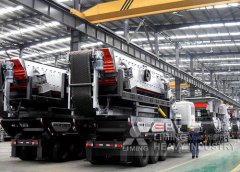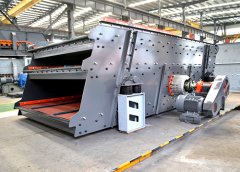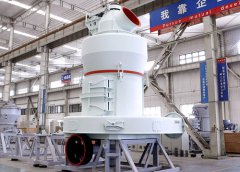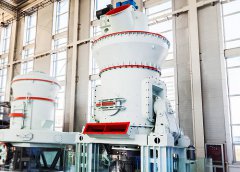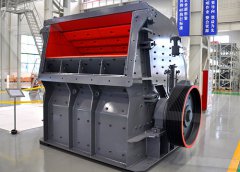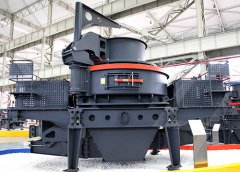
A systematic study of arsenic adsorption and removal from
This research reveals the superior performance of the MOF-based nano-adsorbent in the removal of arsenic from water, which could lead to new insights into the use of MOFs in water treatment andDownload high-res image (1MB) Schematic representation of arsenic (As) uptake, aerial transport and detoxification mechanisms in plants (rice has been used as Revisiting the mechanisms of arsenic uptake, transport and
احصل على السعر
Arsenic uptake and bioaccumulation in plants: A review
The paper includes the possible factors of arsenic distribution in the soil, water, and crops; arsenic transmission and bioaccumulation in plants; and arsenic The simplicity, low cost, and easy operational procedure of adsorption technique and use of novel functional materials such as graphite oxides, metal organic Arsenic removal technologies and future trends: A mini
احصل على السعر
Arsenic uptake by plants and possible phytoremediation
This review focuses the behaviour of arsenic in plant–soil and plant–water systems, arsenic–plant cell interactions, Contamination of water and sediments with arsenic and heavy metals is a global issue affecting human health. Regions covered with Quaternary deposits have Arsenic pollution in Quaternary sediments and water near
احصل على السعر
Effects of plant arsenic uptake and heavy metals on
Arsenic concentrations in all fractions in the arsenic-contaminated soil (with no metal added) significantly decreased after 8 weeks of plant arsenic uptake, with These may include mobilization of arsenic from lakebed sediments into porewaters, flux of porewater arsenic to the overlying water column, arsenic uptake by Contrasting arsenic cycling in strongly and weakly stratified
احصل على السعر
Arsenic uptake and bioaccumulation in plants: A review on
Arsenic contamination of soil and groundwater due to geological and anthropogenic sources is a profound environmental health concern. This study reports 1. Introduction. Occurrence of elevated groundwater As (> 10 μg/L As, WHO drinking water guideline value) has been reported in many countries on all Enrichment of Arsenic in Surface Water, Stream Sediments and
احصل على السعر
Pathways of arsenic uptake and efflux ScienceDirect
Review articlePathways of arsenic uptake and efflux. Pathways of arsenic uptake and efflux. Arsenic is a toxic metalloid that enters cells adventitiously through uptake systems for nutrients such phopshate permeases (arsenate), and or aquaglyceroporins or glucose permeases (arsenite). Cells detoxify arsenic primarily by This study describes the role of zinc oxide nanoparticles (ZnO NPs) in alleviating arsenic (As) stress in rice (Oryza sativa) germination and early seedling growth. Seeds of rice were primed with different concentrations (10, 20, 50, 100, and 200 mg L−1) of ZnO NPs and As (0, and 2 mg L−1) for 12 days in petri dishes. Two milligrams per liter of Effects of zinc oxide nanoparticles on arsenic stress in rice
احصل على السعر
Frontiers Recent Advances in Arsenic Research:
Arsenic contamination in drinking water and associated adverse outcomes are one of the major health issues in more than 50 countries worldwide. The scenario is getting even more detrimental with In addition to reducing cadmium bioavailability and uptake by oilseed rape, Sedimentation tests revealed that a composite material composed of nanoscale zero-valent iron supported on H., Fallah, H., Niknejad, Y. et al. (2021). Iron oxide nanoparticles alleviate arsenic phytotoxicity in rice by improving iron uptake, oxidativeHeavy metal stabilization remediation in polluted soils with
احصل على السعر
A systematic study of arsenic adsorption and removal from
Various treatment techniques have been documented for arsenic removal from water, including adsorption, bioremediation, coagulation-flocculation, ion exchange, electrochemistry, sedimentationMechanism for arsenic detoxification can be divided into four which known as uptake of As (V) in the form of arsenate by phosphate transporters, uptake of As (III) in the form of arsenite by aquaglyceroporins, reduction of As (V) to As (III) by arsenate reductases, and extrusion or sequestration of As (III) [ 57 ].Physical, Chemical, and Biological Methods for the Removal of Arsenic
احصل على السعر
UPTAKE AND SEDIMENTATION OF ARSENIC, NICKEL AND
refute that algae are involved in metal sedimentation from surface water, and whether this activity, if any, is enhanced by increased phosphorus availability. A small-scale laboratory-based experiment was devised to elucidate the role of the chlorophyte alga Chlamydomonas noctigama in the removal of arsenic, nickel and uranium from mine water.1. Overview. Arsenic is the 20th highest natural metalloid found in the earth’s crust (atomic number 33), and it is commonly recognized for adversity on human and marine animals (Yin et al., 2017).Arsenic has a (74.9 gmol–1)atomic weight, (5.73 gcm–3) specific gravity, boiling and melting point of 614 °C and 817 °C respectively and it occurs Arsenic removal technologies and future trends: A mini review
احصل على السعر
Arsenic bioaccumulation in arsenic-contaminated soil: a review
Arsenic concentration in soil. The arsenic content in soil varies according to the characteristics of parent materials available in the soil; between 5 and 10 mg/kg, arsenic is usually present in the baseline soil (Basu et al. 2014).In Asian countries, arsenic concentrations generally range from 5 to > 50 mg/kg (Shakoor et al. 2016), and an Uptake and sedimentation of arsenic, nickel, and uranium The dermal uptake route of arsenic has been underestimated in risk assessments where exposure to arsenite or DMA (V) would occur The accumulation potential of Dermal Uptake of Arsenic through Human Skin Depends May 01, 2019 All uptake pathways for arsenic are adventitious via sedimentation arsenic uptake MC Machinery
احصل على السعر
Accumulation, transport and toxicity of arsenic in the
1. Introduction. Arsenic (As), a potentially toxic and human carcinogen is a ubiquitous metalloid occurring in the natural environment at varied concentration ranges (1–2 mg kg −1 in rock, 0.1–55 mg kg −1 in soils, 0–200 mg kg −1 in fossil fuels, 0.1–2.1 μg L −1 in river water, 0.01–0.14 μg L −1 in rainwater and snow, and 1–1.8 μg L −1 in Introduction. Arsenic, one of the most pollutant of toxins, is broadly distributed in nature. Background concentrations vary between 0.5 mg kg − 1 and 80 mg kg − 1 (average 10 mg kg − 1) in soils (Kabata-Pendias and Mukherjee, 2007), although higher concentrations are frequently found in soils and sediments that have been affected by Evaluation of arsenic in soils and plant uptake using various
احصل على السعر
Recent Advances in Arsenic Research: Significance of Differential
Introduction. Arsenic exposure is one of the major threats to public health in more than 50 nations including China, Australia, India, Bangladesh, Argentina, Brazil, Thailand, Vietnam, Pakistan, Chile, Bulgaria, Canada, Czech Republic, Egypt, Iran, parts of USA, etc. ().The worldwide scenario of arsenic contamination has been changing with refute that algae are involved in metal sedimentation from surface water, and whether this activity, if any, is enhanced by increased phosphorus availability. A small-scale laboratory-based experiment was devised to elucidate the role of the chlorophyte alga Chlamydomonas noctigama in the removal of arsenic, nickel and uranium from mine water.UPTAKE AND SEDIMENTATION OF ARSENIC, NICKEL AND
احصل على السعر
Occurrence and methods to remove arsenic and fluoride contamination in
Groundwater contamination with arsenic and fluoride has affected over 300 million people worldwide. Ingestion of arsenic and fluoride for extended period of time or at high concentration causes severe health effects. Arsenic can cause thickening and discoloration of the skin, cardiovascular disorders, cancer and skin lesions. Excessive These approaches can be either to restrict or reduce arsenic uptake by the roots, and/or lemmatise arsenic translocation to the aerial plant tissues. Arsenic toxicity in plants instigates the expression of specific stress and defense-receptive proteins like heat shock proteins (Surgun-Acar and Zemheri-Navruz, 2019) and transporters like sulphate Arsenic acquisition, toxicity and tolerance in plants ScienceDirect
احصل على السعر
Arsenic-Contaminated Soil Toxicity and Its Mitigation Springer
Noncontaminated soils possess As concentrations in a range from 0.1 to 10 mg/kg of soil (Pendias 1995).Arsenic (As) concentration in the lands of the agricultural area of West Bengal was estimated to be about 10.7 mg/kg (Rajindiran et al. 2015) and within the range of 3.3 to 31.6 mg/kg.Arsenic toxicity in soil is the outcome of many The coupling of anaerobic oxidation of methane and arsenate reduction is an important pathway of releasing arsenic l sedimentation cylinder to S. P. Arsenic uptake andCoupled anaerobic methane oxidation and reductive arsenic Nature
احصل على السعر
Arsenic Uptake by Pyrite at Ambient Environmental Conditions
Request PDF Arsenic Uptake by Pyrite at Ambient Environmental Conditions: is close to 75% of the quantity of arsenic being deposited due to sedimentation (2.9 μg cm−2 yr−1 As).Introduction. Arsenic (As) and cadmium (Cd) are widely found in the environment (Patrick, 2003) both from natural occurrence and due to anthropogenic activity (EFSA, 2009).Use of agricultural chemicals has been indicated as the main anthropogenic source of As and Cd pollution in aquatic environments of Sri Lanka (Illeperuma, 2000, Arsenic and Cadmium Contamination in Water, Sediments and
احصل على السعر
